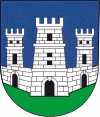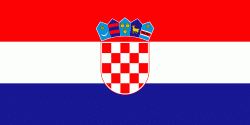Stari Grad (Starigrad)
 |
The most ancient part of Stari Grad falls within the UNESCO Protected World Heritage Site of the Stari Grad Plain, while the entire municipality lies within the surrounding buffer zone.
Stari Grad was originally named Faros (Φάρος) by the Greek settlers from the island of Paros, who arrived in 384 BC. While the name Faros is strikingly similar to the name of the Greek island the settlers arrived from, there is an alternate theory that it came from the previous inhabitants of the area. A great naval battle was recorded a year after the establishment of Pharos colony by a Greek inscription in Pharos (384 – 383 BC) and by the Greek historian Diodorus Siculus (80 – 29 BC), initiated by conflicts between the Greek colonists and the indigenous Hvar islanders, the Liburnians, who asked their compatriots for support. 10,000 Liburnians sailed out from their capital Idassa (Zadar), led by the Iadasinoi (people of Zadar), and laid siege to Pharos. The Syracusan fleet positioned in Issa was informed in time, and Greek triremes attacked the siege fleet, taking victory in the end. According to Diodorus, the Greeks killed more than 5,000 and captured 2,000 prisoners, ran down or captured their ships, and burned their weapons in dedication to their gods.
This battle meant the loss of the most important strategic Liburnian positions in the centre of the Adriatic, resulting in their final retreat to their main ethnic region, Liburnia, and their complete departure from the Italic coast, apart from Truentum. In Roman times, the town became known as Faria, which was turned into Hvar by the incoming Slav population. When the administrative capital of the island was moved to today's Hvar town on the south coast, the old town became simply known as Stari Grad (literally "old city" in Croatian).
Map - Stari Grad (Starigrad)
Map
Country - Croatia
Currency / Language
| ISO | Currency | Symbol | Significant figures |
|---|---|---|---|
| HRK | Croatian kuna | kn | 2 |
| ISO | Language |
|---|---|
| HR | Croatian language |
| SR | Serbian language |

















